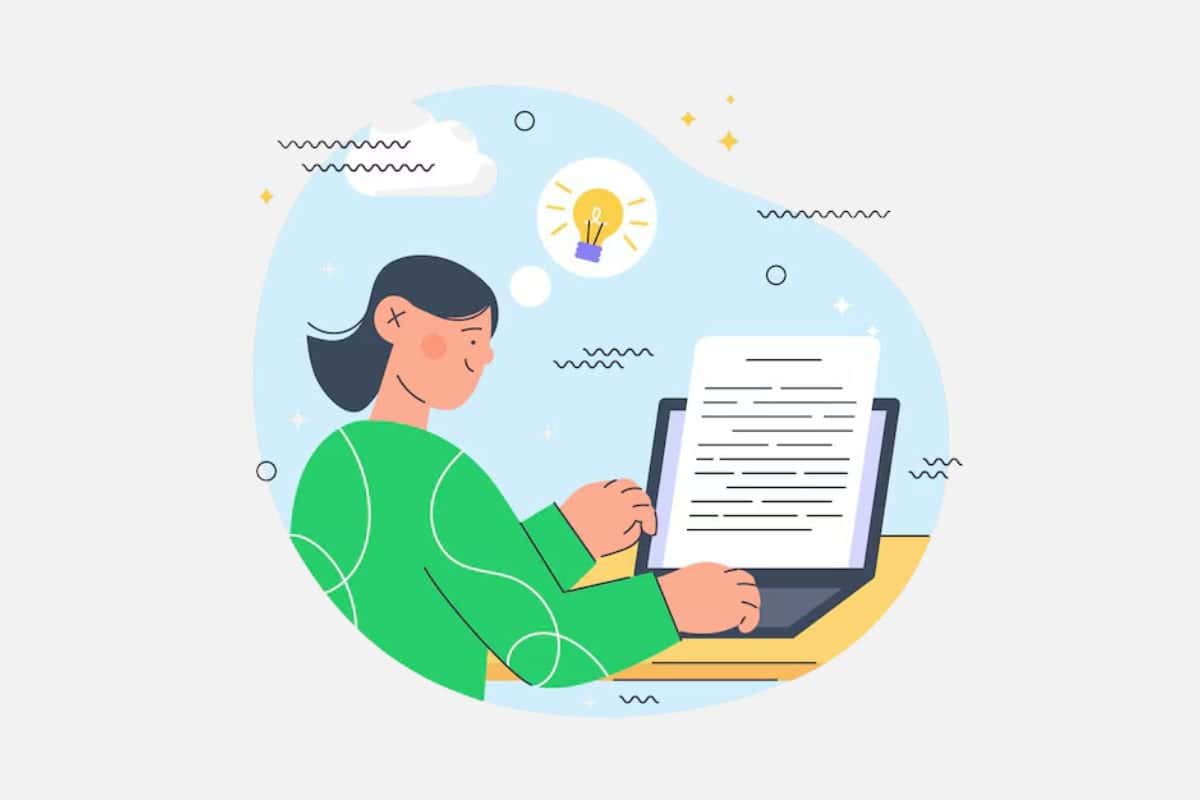If academic and creative writing had a baby, it would be an informative essay.
The task of providing credible and intricate content while keeping your audience’s eyes focused on your writing is a monster task.
Let’s be honest, not all of us can read a manuscript full of technical terms without getting distracted.
A boring, factual essay…is still a boring essay.
That’s why for all you college students out there: understand that numbers and data are awesome, but if you don’t keep your readers engaged—you’re not getting that A+.
But don’t worry; crafting the perfect essay isn’t rocket science. Read on as we discuss the fundamentals of a good informative essay and how to write one.
What Is an Informative Essay?
Writing an informative essay is like being a tour guide through a fascinating topic. It’s not about convincing anyone of anything.
You’re simply sharing knowledge in an engaging way.
When you write an essay, you’re essentially becoming a temporary expert on your chosen subject.
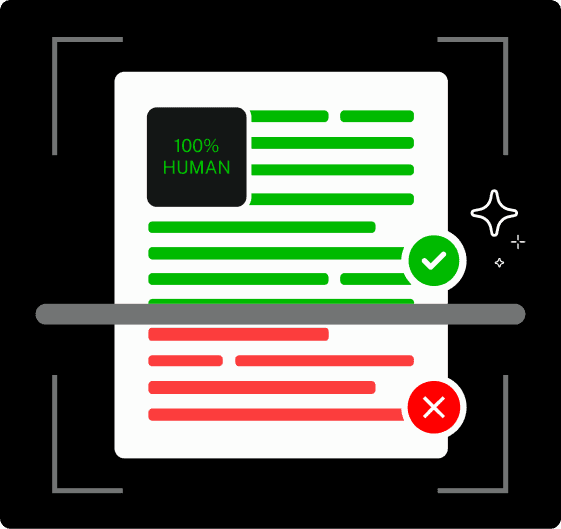
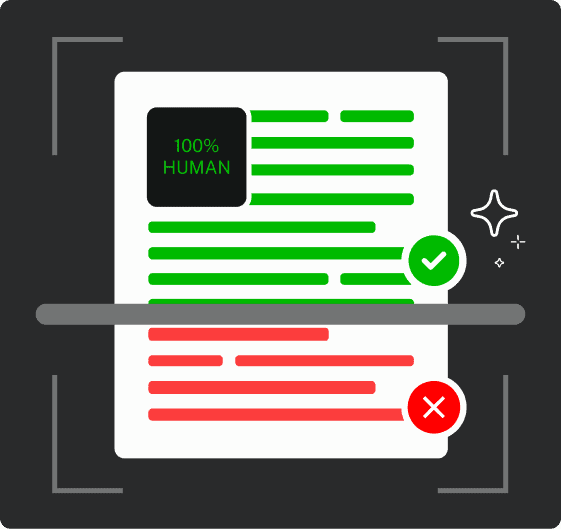
Never Worry About AI Detecting Your Texts Again. Undetectable AI Can Help You:
- Make your AI assisted writing appear human-like.
- Bypass all major AI detection tools with just one click.
- Use AI safely and confidently in school and work.
The goal is simple: educate your reader about a specific topic.
You might explore anything from the history of jazz music to the latest developments in quantum computing.
The key is presenting information clearly and keeping your reader interested from start to finish.
How an Informative Essay Differs from Other Essay Types
Let’s clear up some common misconceptions. We often see students mixing up informative essays with other types of essay writing.
Here’s what makes informative essays unique:
Unlike persuasive essays, you’re not trying to change anyone’s mind.
You’re just laying out the facts in an interesting way. Think of yourself as a journalist rather than a lawyer.
They’re also different from narrative essays because you’re not telling a personal story.
Instead, you’re presenting researched information in a structured way.
And unlike analytical essays, you’re not breaking down arguments.
Your job is to explain and inform, not to analyze competing viewpoints.
How to Write an Informative Essay
We’ll walk you through this process step by step.
After years of researching and writing, we’ve found this approach works best for most students.
Step 1: Generate a Well-Structured Outline
Always start with an outline so you have a roadmap for your essay.
Here’s a tried-and-true outline structure:
Introduction:
- Hook statement
- Background information
- Thesis statement
Body Paragraphs (usually 3-4):
- Topic sentence
- Supporting evidence
- Examples
- Transition to next paragraph
Conclusion:
- Restate thesis
- Summarize main points
- Final thought or call to action
Step 2: Craft a Strong Thesis Statement with AI Assistance
Your thesis statement is the backbone of your essay.
But you need a powerful statement, and if you’re struggling—this is where many AI essay-writing tools step in.
However, unlike other platforms out in the market that generate stiff, robotic sentences, Undetectable AI refines its suggestions to sound natural and human-like.
Try our AI Chat and see for yourself.
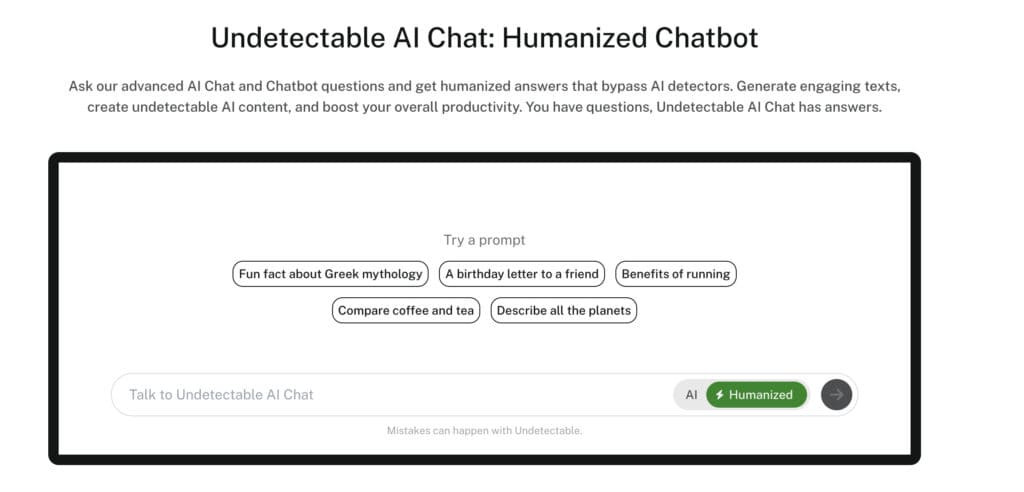
By using advanced natural language processing (NLP) models, the tool not only helps brainstorm potential thesis statements but also keeps them aligned with the tone, structure, and logical flow needed for an academic essay.
Here’s how you can craft a strong thesis statement with AI assistance:
- Start with a basic statement about your topic – This is your central idea in its rawest form. It doesn’t have to be perfect—you just want to get your main point down.
- Use AI to generate variations – Feed your basic idea into Undetectable AI and let it produce multiple refined versions. The AI uses context-aware algorithms to suggest variations that improve clarity, impact, and coherence.
- Pick the most promising one – Review the generated options and select the version that best conveys your argument while maintaining a strong stance.
- Refine it in your own voice – AI can provide a great starting point, but your final thesis should reflect your unique perspective. Tweak sentence structures, add specific terminology, and keep it in line with the essay’s purpose.
Step 3: Write an Engaging Introduction
Starting with a hook that grabs attention works wonders.
Maybe it’s a surprising statistic, a thought-provoking question, or an interesting anecdote.
Then, smoothly transition into your topic and end with your thesis.
Here’s a quick example:
“Did you know that the average person spends six years of their life dreaming?
Sleep science has made remarkable discoveries about our nightly adventures, revealing how dreams influence our daily lives in unexpected ways.”
Step 4: Develop Well-Structured Body Paragraphs
Each body paragraph should focus on one main idea that supports your thesis.
It’s a good idea to structure them like mini-essays:
- Start with a clear topic sentence
- Present your evidence
- Explain how it connects to your main point
- Transition smoothly to the next paragraph
Remember to use specific examples and credible sources.
Real numbers, expert quotes, and concrete examples make your writing more authoritative and engaging.
Step 5: Create a Strong Conclusion
A conclusion should do more than restate what has already been covered—it should provide a lasting impression that reinforces the essay’s significance.
Rather than merely summarizing key points, the final paragraph should offer a broader perspective or a thought-provoking insight that leaves readers contemplating the subject further.
A well-crafted conclusion acts as a parting gift to the reader, tying everything together while emphasizing the essay’s relevance.
Summarizing the main arguments is essential, but adding a final reflection, question, or call to action can make the conclusion more impactful and memorable.
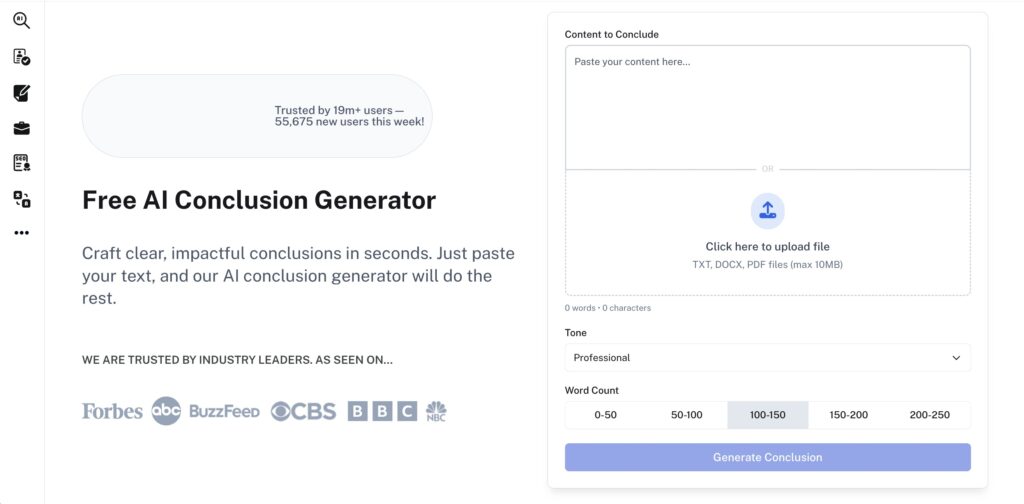
Writing an informative essay means presenting facts with clarity — and your conclusion is where that clarity should shine the most.
If you’re struggling to wrap things up neatly, our AI Conclusion Generator can help. It reviews your content and generates a final paragraph that summarizes your key points and delivers a smooth, purposeful close.
Whether you’re explaining climate science or coding languages, the tool ensures your essay ends on a strong, informative note — without sounding repetitive or robotic.
Step 6: Revise and Improve the Essay for Human-Like Flow
Many writers overlook this step, but revision is essential for ensuring the essay reads naturally and fluidly.
One effective technique is to read the text aloud, which helps identify awkward phrasing and robotic-sounding sentences.
Focus on the following elements:
- Varied sentence structures – Check for a mix of short, punchy sentences and longer, more complex ones to maintain reader engagement.
- Natural transitions – Smoothly connect paragraphs and ideas using transitional phrases that enhance readability.
- Clear connections between ideas – Each point should logically flow into the next, preventing abrupt shifts in the argument.
- Engaging examples and illustrations – Well-placed examples can strengthen the essay’s arguments and make complex concepts easier to understand.
Step 7: Proofread and Format Your Essay
Proper formatting and thorough proofreading keep the essay polished and professional. Attention to detail in this stage enhances readability and credibility.
Be sure to check for:
- Spelling and grammar errors – Even minor mistakes can affect clarity and professionalism.
- Proper citation format – Adhere to the required style guide (APA, MLA, Chicago, etc.) to maintain academic integrity.
- Consistent spacing and formatting – Uniform margins, font size, and line spacing improve presentation and readability.
- Clear paragraph breaks – Well-structured paragraphs prevent information overload and make the essay easier to navigate.
- Logical flow of ideas – Arguments should progress in a coherent order, reinforcing the central thesis.
If you want to handle all these checks instantly, consider using an AI essay checker. It can automatically spot grammar mistakes and help you check for plagiarism. This will save you time while ensuring a professional, polished essay.
How AI Can Speed Up the Writing Process
AI-powered tools like Undetectable AI’s Essay Writer can significantly reduce the time spent brainstorming, structuring, and drafting essays.
Instead of staring at a blank page, users can input a topic and receive a well-organized outline, complete with thesis suggestions, supporting arguments, and even refined phrasing.
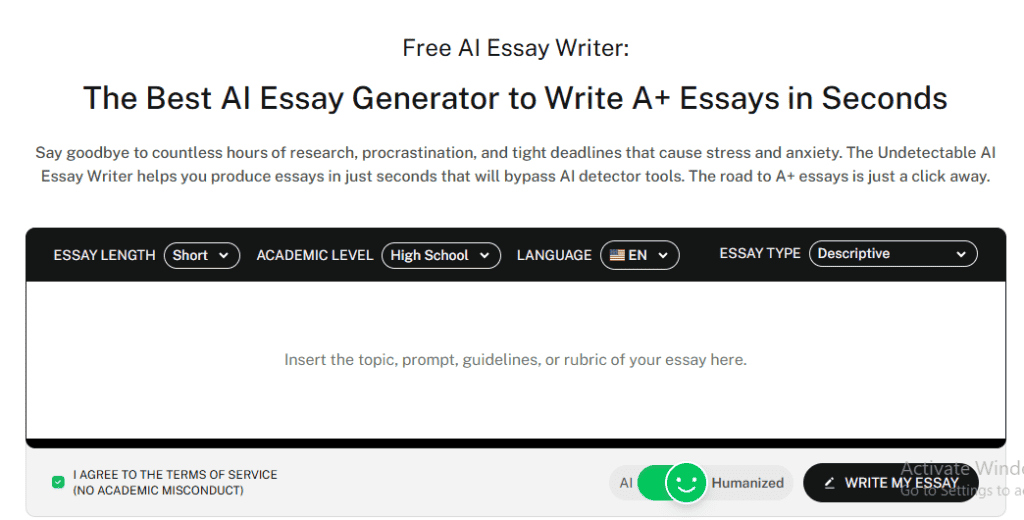
The AI streamlines research by generating relevant content, helping writers focus on analysis rather than information gathering.
Once the AI generates a draft, though, you’ll want to refine it for natural readability. That’s where the AI Humanizer comes in—polishing the text to mimic human writing styles while maintaining authenticity.
Whether for academic, professional, or creative work, the AI Humanizer makes AI-generated content undetectable and fluid.
Try it now to level up your writing!
Informative Essay Examples and Templates
Using a structured template can help organize thoughts clearly and foster a well-developed essay. Below is a concise template for an informative essay:
Basic Informative Essay Template
Introduction
- Hook: A compelling fact, question, or statement.
- Background: Brief context on the topic.
- Thesis Statement: The main idea of the essay.
Body Paragraphs
- Paragraph 1: Main idea with supporting evidence.
- Paragraph 2: Another key point, expanding the discussion.
- Paragraph 3: (Optional) Additional argument or counterpoint.
Conclusion
- Summarize key points.
- Provide final insights or broader implications.
One strong example is the informative essay “Breaking the Vicious Cycle of Poverty” from GradesFixer, which examines how poverty perpetuates across generations and how programs like AmeriCorps help to disrupt it.
The essay effectively:
- Opens with a compelling hook by comparing natural cycles to the cycle of poverty
- Defines key concepts (poverty and its economic impact)
- Supports its arguments with statistics (poverty thresholds, AmeriCorps’ impact)
- Incorporates real-world examples and cultural references
- Concludes with a call to action, urging readers to play a role in breaking the poverty cycle
Common Mistakes to Avoid When Using AI for Essays
Using AI can speed up the writing process, but certain mistakes can reduce the quality and credibility of your essay.
Here are some common ones to watch out for:
- Accepting AI-generated content without revision – AI-generated text should be refined to match your voice and fit in with the rest of your essay.
- Using overly complex language that sounds unnatural – AI may generate phrases that seem sophisticated but feel robotic or out of place.
- Failing to add personal insights and examples – A strong essay should include unique perspectives, real-world examples, or personal analysis to enhance credibility.
- Not fact-checking AI-generated information – AI models may produce outdated or incorrect facts, so you’ll need to verify all claims with reliable sources.
- Creating disconnected paragraphs without smooth transitions – AI-generated content may lack logical flow, making it necessary to revise for better organization and readability.
Final Tips for Writing a High-Quality Informative Essay
Writing a clear and compelling informative essay requires attention to detail and strong organization. Here are some top tips to improve your writing:
- Write about topics that genuinely interest you
- Use specific examples to illustrate your points
- Vary your sentence structure for better flow
- Include relevant statistics and expert opinions
- Keep your audience in mind throughout
- Read your work aloud during revision
FAQs
How do I write a conclusion for an informative essay?
Start by restating your thesis in new words. Summarize your main points briefly, then end with a broader perspective or call to action. Make sure your conclusion feels like a natural endpoint, not an abrupt stop.
How do I write a thesis for an informative essay?
Focus on the main point you want to convey. Make it specific enough to guide your essay but broad enough to cover your topic fully. Avoid making arguments, as you’re informing, not persuading.
How do I write a thesis statement for an informative essay?
Create a clear, concise statement that outlines what your essay will explain. Include your main topics without making any claims about which is better or worse. Keep it factual and straightforward.
It’s Time to Write Your First Draft
Ready to write your informative essay?
Start with your outline, then work through each step outlined above.
Remember, good writing involves revisiting your work—don’t expect perfection in your first draft.
Need a little extra help? our AI Essay Writer can help you get started, and our AI Humanizer will help your writing sound natural and engaging.
Together, it’s like having a writing coach right at your fingertips.
